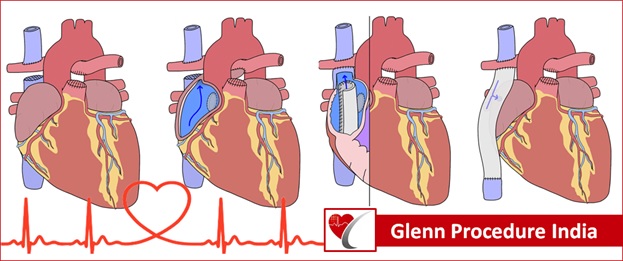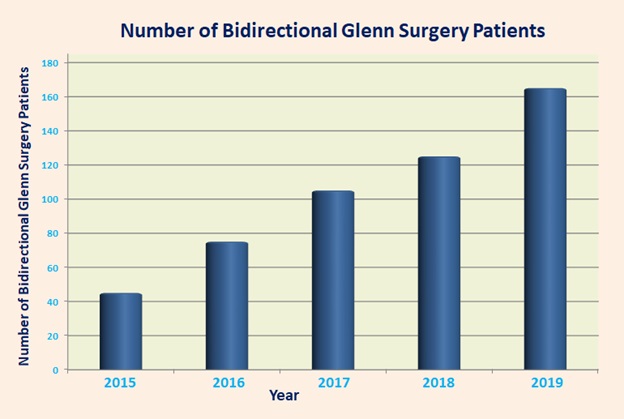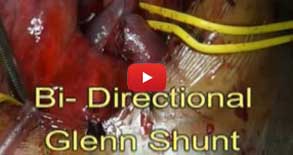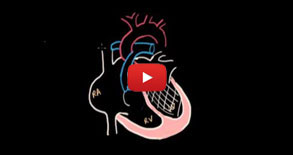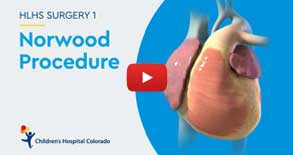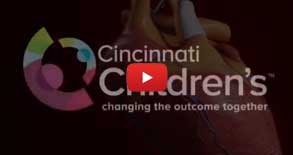What is the Cost of Bidirectional Glenn Surgery with Top Hospitals and Top Surgeons in India?
- The average cost of the Bidirectional Glenn Surgery is very high in western countries.
- India is known worldwide for its advanced medical facilities and promising technology for Bidirectional Glenn Surgery. Many of the best hospitals for Bidirectional Glenn treatment can be found in India.
- Bidirectional Glenn Surgery cost in India is much less when compared to any other countries. Also the cost of Bidirectional Glenn Procedure in India is substantially lower than other developed countries of the world.
- The average cost of the Bidirectional Glenn Surgery in India is around Rs. 4,20,000 ($5000) to Rs. 6,50,000 ($8000).
Various deciding factors could determine the price of Bidirectional Glenn Surgery in India. These can be broadly classified as Hospital, Medical Team or Patient Dependent factors.
Hospital Factors
- Type of the hospital (Government/Trust/Private).
- Use of insurance, type of insurance or self paid.
- Accreditation of the facility
- Reputation and brand value of the hospital.
Medical Team Factors
- Technology / Approach Used
- Surgery Type
- Type of Anesthesia or Sedation
- Qualification / Expertise of the specialist
- Extent of the surgery needed
Patient Factors
- Patient’s diagnosis
- Patient’s general health
- Room Category selected by the patient
- Other treatment required by the patient in conjunction
The LIST of AVERAGE COST of the Bidirectional Glenn Procedure across TOP 15 cities in India in Indian Rupee (INR) is as follows :
| City | Lowest Cost | Average Cost | Highest Cost |
| New Delhi | 4,20,000 | 5,00,000 | 6,40,000 |
| Mumbai | 4,30,000 | 5,25,000 | 6,50,000 |
| Chennai | 4,40,000 | 5,50,000 | 6,80,000 |
| Bangalore | 4,75,000 | 5,60,000 | 6,95,000 |
| Hyderabad | 4,80,000 | 5,55,000 | 6,85,000 |
| Ahmedabad | 4,60,000 | 5,60,000 | 6,00,000 |
| Nagpur | 4,10,000 | 5,00,000 | 6,75,000 |
| Kolkata | 4,60,000 | 5,60,000 | 6,00,000 |
| Pune | 4,35,000 | 5,25,000 | 6,50,000 |
| Gurgoan / Gurugram | 4,40,000 | 5,50,000 | 6,75,000 |
| Chandigarh | 4,50,000 | 5,55,000 | 6,85,000 |
| Jaipur | 4,55,000 | 5,60,000 | 6,95,000 |
| Noida | 4,40,000 | 5,50,000 | 6,75,000 |
| Kerala | 4,65,000 | 5,60,000 | 6,00,000 |
| Goa | 4,60,000 | 5,60,000 | 6,00,000 |
Planning Bidirectional Glenn Surgery Best Cardiac Treatment in India is an easy process.
Our Hospitals Network and Surgery Group are available in 15 cities of India for our patients to access. Kindly fill up the form for a free opinion from our expert cardiology team. You will be provided with an analysis and recommendations for your surgery.NO CHARGES LEVIED.
Special ALL SERVICES INCLUSIVE Packages available for INTERNATIONAL PATIENTS
Bi-directional Glenn Surgery
Cardiac disorders, also known as Cardiovascular disorders, are highly rampant in today’s world. There is a wide spectrum of Cardiac ailments that are prevalent these days and the number of Heart Patients have mushroomed unimaginably and unfortunately. Quite opposite to the earlier times, not only the people belonging to the older generation but even the young generation is getting majorly affected by Cardiac diseases. It is further unfortunate that there are Heart defects, which affect babies or infants. These are referred to as Congenital Heart Defects.
These Heart ailments are enormously challenging because of the age of the patient. So, it is obvious that the surgeries required to deal with these defects are definitely not easy. One of these highly intricate surgeries is called as BD Glenn or Bi-directional Glenn Surgery.
Overview
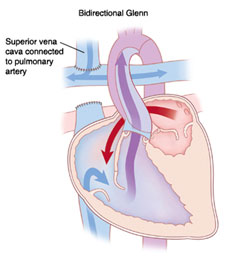 A normal Heart has four equal-sized pumping chambers, which includestwo atrium – a left and a right and two ventricles – a left and a right. The primary role of the right side is to pumpand sendblood to the Lungs, and the role of the left side is to pumpand send blood to the remaining sections of the body.
A normal Heart has four equal-sized pumping chambers, which includestwo atrium – a left and a right and two ventricles – a left and a right. The primary role of the right side is to pumpand sendblood to the Lungs, and the role of the left side is to pumpand send blood to the remaining sections of the body.
The Bidirectional Glenn Shunt or this is also known as the Hemi-Fontan procedure, is one of the multiple surgical methodologiesthat are performed to enhance Cardiac function for the time being. This is particularly beneficial for patients suffering from serious structural Heart disorder, which feature single ventricular physiology.The Bidirectional Glenn Surgery is also called as Bidirectional Glenn Shunt, Bidirectional Cavopulmonary Anastomosis, or Cavopulmonary Shunt. It is one in a sequence of procedure, which are planned and implemented to get a sufficient volume of blood to the Lungs.
For Whom is this Surgery beneficial?
The requirement for this surgery arises, when one of the Heart’s ventricles is unable to perform its job properly. The Glenn procedure is the second of three crucial Congenital Heart procedures that are performed to help specifically the patients suffering from Hypoplastic Left Heart Syndrome (HLHS) and other single ventricle Heart problems. It is generally performed about six months after birth.
HLHSis a birth defect, which obstructs the normal blood flow through the Heart. As the baby develops and grows during pregnancy, the left side of the Heart does not develop appropriately. Due to this there are other issues as well:
- The left ventricle is undersized
- The mitral valves are not developed or are very small
- The aortic valve is not formed properly
- The ascending portion of the aorta is underdeveloped and weak or is too small
- Often, babies with Hypoplastic Left Heart Syndrome also suffer from an Atrial Septal Defect. In this problem, there is a hole between the Heart’s left and right upper chambers (atria)
Are you looking for Pediatric Cardiac Surgery in India?
Please enquire with us, get a “No Obligation Quote”
The reason behind the occurrence of this syndrome is unknown. But some babies face this Heart defect as a result of the changes in their chromosomes or genes.Also, can be the result of the kind of environment with which the mother is in contact with and also matters is her diet.
This surgery is also beneficial for patients suffering from Tricuspid Atresia. It is kind of Heart ailment, which is present at birth, which means that it is a Congenital Heart ailment. In this, the Tricuspid Heart Valve is abnormally developed or missing. The defect hinders the blood flow from the right atrium to reach the right ventricle. There are other Heart or vessel issues, which are mostly present at the same time.
Atrioventricular Canal Defect (AVC)Unbalanced atrioventricular (AV) Canal Defect:
Atrioventricular canal (AV canal, endocardial cushion defect) is present at the time of birth and includes:
- An Atrial Septal Defect (ASD) low in the Atrium called a primum ASD
- A Ventricular Septal Defect (VSD) high in the ventricle
- A common Atrioventricular Valve – instead of two different valves, the Mitral and the Tricuspid valves
This defect occurs, when the centre of the Heart does not develop appropriately.
Treatment/Surgery Recommended
Once a baby is diagnosed to be suffering from Hypoplastic Left Heart Syndrome, there are multiple procedures that are required to be done in a particular order. Each of these surgeries are extremely important in their own ways. These surgeries are helpful in increasing the blood flow to the body and bypass the affected left side of the Heart. In such cases, the right ventricle takes over the role and becomes the main pumping chamber for the body. At the same time, it should be kept in mind that these procedures do not actually cure the issue of Hypoplastic Left Heart Syndrome, but help in restoring the Heart’s function. Often, medicines are given to address the symptoms of the defect prior to and after the surgery.
The surgery for Hypoplastic Left Heart Syndrome is generally done in three different stages:
Norwood Procedure
This surgery is mostly done within the first two weeks after the baby’s birth. In this, the surgeons create a ‘new’ aorta and attach it to the right ventricle. They also fix a tube from either the aorta or the right ventricle to those vessels that supply the Lungs (Pulmonary Arteries). This way, the right ventricle is able to pump blood to both the Lungs and the remnant areas of the body. This is undeniably a very challenging surgery. Once the surgery is done, the situation surely improves; however, the skin of the baby might appear a bit bluish. This is because of the mixing of oxygen-rich and oxygen-poor blood in the Heart.
Bi-directional Glenn Shunt Procedure
This surgery is mostly attempted, when the infant is of about 4-6 months. With this procedure, the surgeons createa direct link between the Pulmonary Artery and the vessel, that is the Superior Vena Cava. This helps in returning the oxygen-poor blood from the upper area of the body to the Heart. This brings down the work of the right ventricle, by allowing the blood to return from the body to go directly to the Lungs.
Fontan Procedure
This surgery usually is done, when the infant is of about 18 months to 3 years of age. By implementing this surgery, the surgeonslink the Pulmonary Artery and the vessel that is the inferior vena cava. Thus, the oxygen-poor blood returns from the lower region of the body to the Heart and this allows the remaining blood to come back from the body and flow to the lungs. After this surgery is complete, the oxygen-rich and oxygen-poor blood do not get mixed any more in the heart. Therefore, the infant’s blood doesn’t appear bluish after this.
Treatment/Surgery Recommended
Once a baby is diagnosed to be suffering from Hypoplastic Left Heart Syndrome, there are multiple procedures that are required to be done in a particular order. Each of these surgeries are extremely important in their own ways. These surgeries are helpful in increasing the blood flow to the body and bypass the affected left side of the Heart. In such cases, the right ventricle takes over the role and becomes the main pumping chamber for the body. At the same time, it should be kept in mind that these procedures do not actually cure the issue of Hypoplastic Left Heart Syndrome, but help in restoring the Heart’s function. Often, medicines are given to address the symptoms of the defect prior to and after the surgery.
The surgery for Hypoplastic Left Heart Syndrome is generally done in three different stages:
Norwood Procedure
This surgery is mostly done within the first two weeks after the baby’s birth. In this, the surgeons create a ‘new’ aorta and attach it to the right ventricle. They also fix a tube from either the aorta or the right ventricle to those vessels that supply the Lungs (Pulmonary Arteries). This way, the right ventricle is able to pump blood to both the Lungs and the remnant areas of the body. This is undeniably a very challenging surgery. Once the surgery is done, the situation surely improves; however, the skin of the baby might appear a bit bluish. This is because of the mixing of oxygen-rich and oxygen-poor blood in the Heart.
Bi-directional Glenn Shunt Procedure
This surgery is mostly attempted, when the infant is of about 4-6 months. With this procedure, the surgeons createa direct link between the Pulmonary Artery and the vessel, that is the Superior Vena Cava. This helps in returning the oxygen-poor blood from the upper area of the body to the Heart. This brings down the work of the right ventricle, by allowing the blood to return from the body to go directly to the Lungs.
Fontan Procedure
This surgery usually is done, when the infant is of about 18 months to 3 years of age. By implementing this surgery, the surgeonslink the Pulmonary Artery and the vessel that is the inferior vena cava. Thus, the oxygen-poor blood returns from the lower region of the body to the Heart and this allows the remaining blood to come back from the body and flow to the lungs. After this surgery is complete, the oxygen-rich and oxygen-poor blood do not get mixed any more in the heart. Therefore, the infant’s blood doesn’t appear bluish after this.
Top 10 Bidirectional Glenn Surgery Hospitals in India
- Indraprastha Apollo Hospital
- Medanta – the Medicity
- Fortis Group of Hospital
- Artemis Hospital
- Global Group of Hospital
- Nanavati Super Specialty Hospital
- Max Super Specialty Hospital
- Narayana Superspecialty Hospital
- BLK Super Specialty Hospital
- Apollo Hospital, Chennai
Top 10 Bidirectional Glenn Surgeons in India
- Dr. Balakrishnan
- Dr. Srinath Vijayashekaran
- Dr. Amit Misri
- Dr. Manjinder Sandhu
- Dr. MuneshTomar
- Dr. Kuldeep Arora
- Dr. Kulbhushan Singh Dagar
- Dr. Srinivas M. Kini
- Dr. Jagjit Singh Bhasin
- Dr. M S Aditya
What are the special services provided by us for our international patients?
- Intricate planning from your appointment with the Doctor to your accommodation in the city post surgery.
- Arranging for call conferences with your respective surgeons so that all of your concerns can be addressed.
- Expat Services
- Continuous assistance of our executive on every step.
- Providing you with the guidelines for the Visa Application Process so that the process could be hassle free.
- Sending recommendations of Hotels ranging from 2 star services to 5 star services for your stay in the city as per your budget and preference.
- Arranging for Ground Transportation: Your Airport pick up and Drop
- Regional Translators available 24*7 for your assistance.
- Assistance in arranging a local sim card so that you could be in constant touch with us.
- Following up with the patient until they have landed back to their country safely.
- Following up with patient for post op care.
Why choosing India Cardiac Surgery Team for your Bidirectional Glenn Procedure is the right decision to make?
- A well experienced and qualified team plans your surgery.
- Affordable and discounted surgery packages.
- Patient safety and care is the topmost priority.
- Treatments are available for all age groups from an infant to an elderly person.
- Recommendations of only NABH accredited Hospitals with well equipped and Hi-tech technology labs and well qualified employees.
Are you looking for any assistance to plan your Bidirectional Glenn Surgery in India?
Get in touch with us to get a free consultation and guidance towards your treatment planning by contacting us online.
What happens during the Bi-directional Procedure?
The procedure is an open heart surgery and takes about three hours to complete. In this surgery, a vein known as the Superior Vena Cava is joined to the right pulmonary artery. This helps in the blood going directly to the Lungs for oxygenation by avoiding the right side of the Heart. Thus, the blood flow is rerouted. The temporary shunt that is placed during the Norwood Surgery is hence no longer needed and is removed. During the surgery, the patient is connected to a Heart-lung Bypass Machine, which takes over the blood circulation and breathing.
Recovery after BD Glenn Surgery
Being a highly critical surgery, the recovery period is particularly crucial. Also, looking at the age of the patient involved, it becomes further intricate. The hospital stay after the surgery is approximately 5-7 days. The breathing tube is mostly taken off the day of surgery orthe following morning. The arterial line is generally removed after a few days, after most of the most IVmedicines are stopped. The central venous line is removed once most IV medicines are stopped. There are chest tubes that are mostly removed after 24-48 hours following the procedure. Before removing these chest tubes, the output of fluid is checked and only if it is minimal, then the tubes are removed.
Post-surgery, the patient is placed on Heparin in order to avoid the formation clots in the new Cavopulmonary connection. Once the child is eating properly, Heparin is discontinued, and Aspirin is started. During this recovery phase, children might become very fussy and will sometimes have a headache. This is because of the elevated venous pressure in the head and upperextremities. There is nothing to worry with these symptoms as these are temporary and go away over a span of time – mostly a few days to weeks. However, if these symptoms are persistent then may require medicine for comfort.
Risks associated with this Surgery
- Infection
- Increased pressure on the Lungs
- Damaged to the Lungs, Lymph Vessels, Diaphragm
Infants born with Hypoplastic Left Heart Syndrome may have to face lifelong complications. These kids have to under regular supervision and require regular follow-up visits to a Cardiologist or a Paediatric Cardiac Surgeon in order keep a check on the progress. There can be cases, where the defect is extremely complicated, and the Heart gets weaker after the surgeries. Such patients might have to undergo a Heart Transplant. After the Heart Transplant surgery, will need to take medications for the rest of their lives so that their body doesn’t reject the new Heart.
Why is India considered the Best Venue for such Advanced Procedures?
The hospitals have been vey thoughtfully designed to handle the requirements of the patients. There is more than sufficient amount of facilities so that a large inflow of patients can be attended, without them going through a lengthy waiting time.The patients are very carefully kept away from getting any infection or facing any treatment related complications.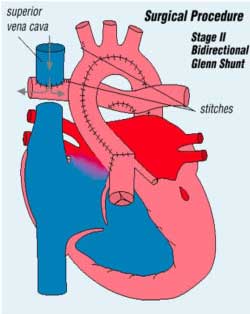
Similar to these, there are several other well established hospitals that are spread across the major cities of India. The Cardiology departments at these hospitals are focused on catering to each and every treatment seeker, in the best possible way. What makes these hospitals a step ahead than other hospitals, is the large pool of talent available here.
The Indian surgeons, particularly, those associated with the field of Cardiology, are extremely experienced and have the fluency to handle each and every type of Cardiac Surgery; even the most complicated ones like BD Glenn Procedure. It is certainly one of the most intricate Heart surgeries and obviously because it is dealing with the most delicate organ of our body, the surgical hands dealing with this surgery have to be enormously adept. In this matter, India is blessed to have Cardiac surgeons, who have gained the trust of the worldwide patients.
Another key factor is the healthcare expenditure, which burden the patients badly but not in India. In India, the medical tourists can enjoy major cost benefits, when compared to other countries like UK, USA or Singapore or any other country for that matter. Despite the rapidly rising treatment expenses everywhere, India has still managed to keep her healthcare services very affordable.
It is not just the Indian patients, but a huge chunk of international patients too prefers to get Cardiac treatment done in India. Owing to the advent of Medical Tourism, it has become a very comfortable experience for the overseas patients to come to India. Over the years, there are uncountable international patients, who have visited India for receiving different forms of treatment. For patients looking for a Cardiac Surgery like the BD Glenn Surgery, they can avail the timely and flowless assistance of Forerunner Healthcare Consultants/India Cardiac Surgery Site group. The group has services to fulfil each and every requirement of the foreign nationals, which is proving a very gratifying experience for them.
How many patients underwent Bidirectional Glenn Surgery in India in the last 5 years?
In recent years, India has emerged as a medical hub for patients looking for affordable, accessible and efficient low cost Cardiac Glenn Repair Surgery. This emergence is primarily due to the development of state-of-the-art private and public sector healthcare facilities, medical insurance and the ease of access to quality healthcare services. An average increase of 15 to 20 percent annually has been observed in the number of patients in the last 5 years.
Here are the approximate figures of the patients underwent Bidirectional Glenn Surgery in the last 5 years in India:
Get a free consultation with our Surgeon for your Bidirectional Glenn Surgery
Kindly fill up the form for a free consultation with our surgeons
After thorough analysis of the reports and medical history, you will be provided with the advised clinical opinion and suggestions regarding your Bidirectional Glenn Surgery from our experts.

 English
English Arabic
Arabic French
French Bangla
Bangla Russian
Russian